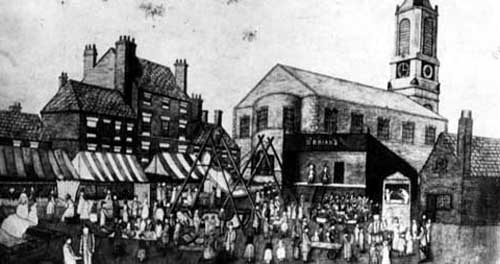|
New South Wales Z27 Class Locomotive
The Z27 class (formerly G.1204 class) was a class of steam locomotives built by Hunslet Engine Company for the New South Wales Government Railways of Australia. History Eight 'Mogul' type locomotives were built in 1913 for the New South Wales Public Works Department as railway construction locomotives, working on lines such as Coffs Harbour to Glenreagh, Glenreagh to Dorrigo and the Tumbarumba railway line between Humula and Tumbarumba. When the New South Wales Government Railways assumed responsibility for railway construction in 1917, these locomotives were transferred and became the (G)1204 class. These locomotives were considered too modern to be utilised on construction work and were transferred to more demanding duties. However they were found to be unsuitable for working lines which abounded in curves, having a tendency to shed their valve motion on anything other than the straightest of track. They were transferred to Narrabri West where they stayed for practically the ... [...More Info...] [...Related Items...] OR: [Wikipedia] [Google] [Baidu] |
Hunslet Engine Company
The Hunslet Engine Company is a locomotive-building company, founded in 1864 in Hunslet, England. It manufactured steam locomotives for over 100 years and currently manufactures diesel shunting locomotives. The company is part of Ed Murray & Sons. History The early years 1864–1901 The company was founded in 1864 at Jack Lane in Hunslet by John Towlerton Leather, a civil engineering contractor, who appointed James Campbell (son of Alexander Campbell, a Leeds engineer) as his works manager. The first engine was completed in 1865. It was ''Linden'', a standard gauge delivered to Brassey and Ballard, a railway civil engineering contractor as were several of the firm's early customers. Other customers included collieries. This basic standard gauge shunting and short haul "industrial" engine was to be the main-stay of Hunslet production for many years. In 1871, James Campbell bought the company for £25,000 (payable in five instalments over two years) and the firm remained ... [...More Info...] [...Related Items...] OR: [Wikipedia] [Google] [Baidu] |
Narrabri
Narrabri ( ) is a locality and seat of Narrabri Shire local government area in the North West Slopes, New South Wales, Australia on the Namoi River, northwest of Sydney. It sits on the junction of the Kamilaroi Highway and the Newell Highway. At the 2016 census, the town of Narrabri had a population of 5,903. Because of the geography of Narrabri and the surrounding areas, Narrabri township was quite prone to flooding and fire. Recently, changes have been made to the river flow to improve overall safety. It is the centre of a major cotton-growing industry. Other agricultural industries in the area include wheat, beef and lamb. Nearby attractions are Mount Kaputar National Park, the Australia Telescope Compact Array at the Paul Wild Observatory (administered by the CSIRO) and a number of agricultural centres. Just to the south of town is the Pilliga Forest, the largest remnant temperate forest in Eastern Australia. Narrabri also has The Crossing Theatre, a 1,000-seat auditorium ... [...More Info...] [...Related Items...] OR: [Wikipedia] [Google] [Baidu] |
Railway Locomotives Introduced In 1913
Rail transport (also known as train transport) is a means of transport that transfers passengers and goods on wheeled vehicles running on rails, which are incorporated in tracks. In contrast to road transport, where the vehicles run on a prepared flat surface, rail vehicles (rolling stock) are directionally guided by the tracks on which they run. Tracks usually consist of steel rails, installed on sleepers (ties) set in ballast, on which the rolling stock, usually fitted with metal wheels, moves. Other variations are also possible, such as "slab track", in which the rails are fastened to a concrete foundation resting on a prepared subsurface. Rolling stock in a rail transport system generally encounters lower frictional resistance than rubber-tyred road vehicles, so passenger and freight cars (carriages and wagons) can be coupled into longer trains. The operation is carried out by a railway company, providing transport between train stations or freight customer faciliti ... [...More Info...] [...Related Items...] OR: [Wikipedia] [Google] [Baidu] |
Hunslet Locomotives
Hunslet () is an inner-city area in south Leeds, West Yorkshire, England. It is southeast of the city centre and has an industrial past. It is situated in the Hunslet and Riverside ward of Leeds City Council and Leeds Central parliamentary constituency. The population of the previous City and Hunslet council ward at the 2011 census was 33,705. Many engineering companies were based in Hunslet, including John Fowler & Co. manufacturers of traction engines and steam rollers, the Hunslet Engine Company builders of locomotives (including those used during the construction of the Channel Tunnel), Kitson & Co., Manning Wardle and Hudswell Clarke. Many railway locomotives were built in the Jack Lane area of Hunslet. The area has a mixture of modern and 19th century industrial buildings, terraced housing and 20th century housing. It is an area that has grown up significantly around the River Aire in the early years of the 21st century, especially with the construction of modern r ... [...More Info...] [...Related Items...] OR: [Wikipedia] [Google] [Baidu] |

